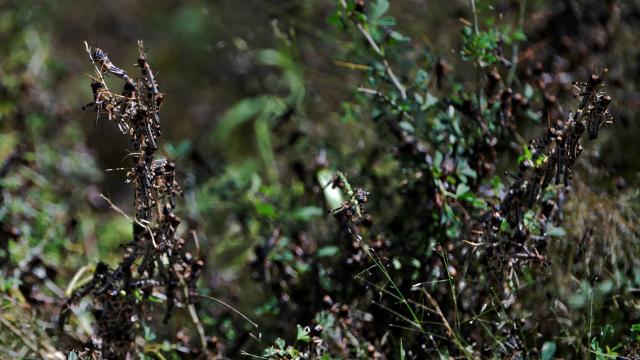For months, hundreds of millions of locusts have been flying across East Africa, the Arabian Peninsula and the Middle East, forming the largest swarms seen in decades. New swarms are continuing to spread from Kenya to Iran, and the worst swarms”those over the Horn of Africa”are multiplying quickly.
The bugs pose an unprecedented threat to nutrition and health in the region, which faces extreme poverty, ongoing violent conflict, and limited healthcare infrastructure. Now the covid-19 pandemic is making it more difficult to quell the swarms, creating a nightmarish situation.
“Obviously, the challenge for the international community will be to address the humanitarian needs of multiple layers of need and competing crises all over the globe,” Cyril Ferrand, the FAO’s East Africa resilience team leader, told Gizmodo. “That’s the danger of the current situation where we have huge demands for assistance, combined with the fact that with covid-19, even the northern hemisphere is quite affected economically.”
While covid-19 is a growing concern in East Africa, the locusts have been an ongoing crisis for months. A swarm that covers a square kilometre of land can eat the same amount of food in a single day as 35,000 people. The Horn of Africa”which includes Djibouti, Ethiopia, Eritrea, Kenya, Somalia, the Sudan and Uganda”is already one of the world’s most food-insecure regions. More than 40 per cent of the population are undernourished, and in Eritrea and Somalia, that rises to 70 per cent. Right now, a new generation of locusts are taking flight, interrupting farmers’ planting season. And the next generation of locusts are expected to form swarms just as crops are ready to be harvested.
“The threat to food security is unprecedented,” Keith Cressman, the senior locust forecaster at the Food and Agriculture Organisation (FAO), told Gizmodo. “The timing is really not very good.”
Now, covid-19 is being added to the mix as it begins to spread across the region. It not only threatens health by itself. The pandemic is also interfering with efforts to stop the locust swarms.
The most effective way to quell the spread of the locusts is to spray pesticide from aircrafts. Cressman said those efforts were already underway in Somalia, Ethiopia, and Kenya before the covid-19 pandemic reached the region.
But further operations could be hampered by covid-19 related restrictions. Shipping costs have increased, and some of the region’s airports and borders are closed, making it more difficult to transport supplies. Ferrand told Gizmodo that in addition to supplies, experts that have been travelling to the region from Australia and Europe also facing travel restrictions, which “will indeed impact” the amount of help local governments can expect.
“Suppliers of motorised sprayers and pesticides are [also] facing major challenges with limited airfreight options to facilitate delivery.. .purchased orders were placed few weeks ago and pesticides expected last week in Kenya have been delayed by 10 days,” he said.
The FAO has appealing for $US153 ($248) million to help control the swarms and has received $US110 ($178) million so far, according to Cressman.
“If you consider that there’s an awful lot of other things going on in the world at the moment, that’s not bad,” he said.
As governments try to contain covid-19 and the impacts the virus is having on the economy, it’s important to remember that the locust swarms won’t stop for the covid-19 pandemic. Without that aid package, local governments won’t have the resources to put a stop to the spreads. By summer, the swarms could grow by 500 times.
“How do we respond to the needs of the European countries and North American countries as well as the humanitarian and development assistance that is still so necessary in the continent of Africa?” Ferrand said. “This is the challenge that we will have to face in 2020.”
